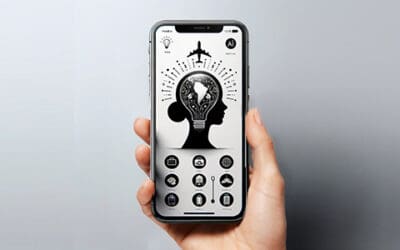
The Best Competitive Intelligence Tool is in the Hands of Your Customers.
Over the years, there have been a considerable amount of ways in which companies collect data on their competitors. There have been traditional methods: reviewing websites, conducting primary research, analyzing advertising messages and visiting stores. In the last decade or so, we’ve added things like reviewing social media channels, conducting search term analysis and tapping into digital media’s customer profiles. But none of that can tell you when you are losing a customer visit to a competitor; the technology hasn’t been available until now. What’s even better is that it’s already in your customers’ hands. Some people even refer to it as an appendage. Of course, I’m speaking of our smartphones.
The fail point for nearly all branded apps is they are not tracking and using the behavioral data as a competitive intelligence tool.
Most brands spend nearly 100% of their effort on an app’s content or having it perform routine tasks. For many companies, the real value lies in the app’s competitive behavioral data. It can lead to a variety of smart decisions that have lasting benefits. To show how brands can take advantage of this, let’s look at some insights and adaptations a few LighthousePE clients realized.
One of LighthousePE’s casino clients thought the next physically closest casino was their major competition. For years their primary promotions and marketing decisions were based on that hypothesis. By tapping into their smartphone apps’ behavioral data, the casino saw a significant percentage of their players were visiting another casino much further away. They were losing visits to that competitor several times a month. Moreover, they were also losing entertainment dollars to bowling alleys, restaurants, concert facilities and even Dave & Buster’s. This was all provided to them by the data they garnered from a competitive geofencing strategy. Further analysis provided insight to why they were losing precious player visits.
The client improved mid-week promotions. They adapted their concert bookings to reflect what their customers wanted. They even changed some of their marketing strategies to target the actual competitors, like shifting their outdoor buys to align with the roadways their players traveled on to their main competitors.
Another client, a Quick Serve Restaurant chain (QSR) wanted to know which competitors they were losing visits to. On average, each restaurant has between 7 – 10 competitors they can identify. The goal was to gain insight to which restaurants and on which days their customers were eating out. This kind of information allows QSRs to change a range of things, from marketing offers to menu specials. Plus, it gives QSRs a much clearer picture of the wallet share each location has.
The data on the competitors your customers are visiting isn’t just a bunch of numbers. It’s your customers telling you something.
The value in using location services as a competitive analysis tool extends beyond trying to keep those customers in one location. For some organizations it means facilitating behavior change.
Over Tourism is a prime example. Basically, Over Tourism is when a location gets too many visitors. Typically, these visitors believe the place they are visiting is the only thing to see. By analyzing the location data of an individual’s visitor guide app, recommendations can be provided that are in sync with a visitor’s likes and preferences. Moreover, these types of content pushes can happen in real-time. The end result is that Over Tourism gets a little more spread out, lesser-known places see an increase in visitors, and tourists get an experience that is far more personalized. That’s a win in my book.
In the end, this type of competitive intelligence isn’t hard to get. It takes effort and a little brain power to put it into action. The benefits of which will change your business in profound ways.
You may also be interested in
Most Mobile Apps Don’t Make Money. Here’s Why.
Most brands believe their mobile app is making them money, when in reality, it probably is not. After all, when customers use a brand’s mobile app to complete a transaction, it doesn’t necessarily mean the mobile app is responsible for the transaction. It’s the...
Leveraging Artificial Intelligence (AI) to Uncover Sales Opportunities
Businesses are constantly on the lookout for innovative ways to maximize their revenue. Two of the most powerful sales techniques are cross-selling and upselling. Both strategies involve offering additional products or services to a customer during the sales process,...
How Adding True 1:1 Personalized Content to Your Mobile Marketing Can Generate Immediate ROI for Your Business
Personalized automated mobile marketing is more accessible and affordable than most business owners realize. It’s not just for large corporations anymore. It’s available for businesses of all sizes. With LighthousePE, your business can deliver deeply...
Personal AI Travel Itineraries Can’t Fully Deliver on the Promise of Personalization
Generative AI creates travel itineraries based on what everybody else has done, not what you’d like to do. The travel and tourism industry is all about inspiring people to have meaningful, memorable experiences when visiting a destination. Destination...





